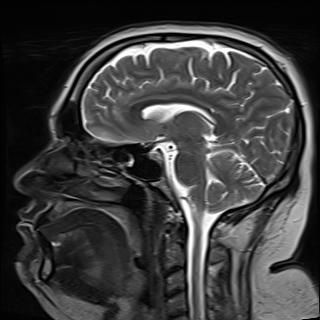So helium is a limited resource. Okay gotcha. So why not take two hydrogen atoms. Take their protons and neutrons. And just fucking start squeezing them together until you get helium?
And I don’t mean in the same way you get H2. Those are still separate from each other.
This can be done, it’s called nuclear fusion and the sun does it constantly. The practical limitation is, largely, overcoming the electrostatic force.
Basically, because the atoms are similarly charged, squeezing them together is like trying to push together the North sides of two magnets: they repel each other. It takes a massive amount of energy to squeeze them together hard enough to overcome that repulsion, fortunately the sun has enough energy to do this fairly easily. It is much more difficult for humans to do.
… I feel like you just perfectly eli5 nuclear fusion. I’m using this example next time it comes up.
I can tell you know this, I’m just tacking it on for those who don’t:
Why do the nuclei stick together at all, once you’ve pushed them together? Because the nuclear force, which is attractive instead of repulsive, is just a little bit stronger. OK, so why then doesn’t the nuclear force just pull all atoms together? Because it is short range, and only works once the nuclei are “touching.”
I know that much, but actually how can a force be stronger but short range?
The repulsive force is electromagnetism while the attractive force is an exchange of mesons between the atoms.
It is different forces with different ways of interacting on objects.
This is the chatGPT answer I’m basing my answer on:
"The concept of a force being both stronger and short-range might seem counterintuitive at first, but it’s a fundamental aspect of how forces operate in the quantum world, particularly within the nucleus of an atom. The force being referred to here is the strong nuclear force, also known as the strong force or strong interaction, which is one of the four fundamental forces in physics.
The strong nuclear force is indeed much stronger than electromagnetism (the force that repels positively charged protons from each other) but it operates over a very short range. Here’s a more detailed explanation:
-
Strength: The strong force is the strongest of the four fundamental forces. Its strength ensures that it can overcome the electromagnetic repulsion between protons within the nucleus. Without the strong force, the protons would repel each other and the nucleus would disintegrate.
-
Range: The strong force only acts over very short distances, approximately 1 femtometer (1 fm, or (10^{-15}) meters), which is roughly the diameter of a large nucleus. Beyond this range, the force drops off very rapidly, becoming negligible compared to electromagnetic forces. This is why atomic nuclei can be stable: within the nucleus, the strong force is dominant and keeps the protons and neutrons together; outside the nucleus, its influence is minimal, so atoms do not “stick” to each other due to the strong force.
The short-range nature of the strong force is due to the mechanism by which it operates, involving the exchange of particles called mesons between nucleons (protons and neutrons). This particle exchange can be thought of as the “glue” that holds the nucleus together, but this “glue” only works over very short distances.
To understand how a force can be both stronger and short-range, it’s helpful to compare it with gravity, which is much weaker but has an infinite range. Gravity affects objects no matter how far apart they are, although its effect diminishes with distance. In contrast, the strong force has a much greater effect but only over a very short range. This difference in behavior is due to the different properties and mechanisms governing these forces. "
Hope this helps, it is not really my domain so maybe someone can ELI5 better for us !
-
So does the sun just have huge amounts of helium? Where is it getting all that helium? Can we have some
It’s making it, from the tons of hydrogen it has in the fusion process. The energy and the reason stars even do this is because all of that mass that close together spontaneously does that; starts fusing.
We can’t have any, because a star will use up all the hydrogen to make helium, then start using all of the helium to make carbon and oxygen. Then start to make…
This is overly simplified and it varies from star to star (the more massive the star, the longer it churns through “making” elements into more “complex” elements) until its core is all iron, at which point fusion becomes a net negative.
From there other things can happen like novae. All throughout this life process though, that “elemental conversion” is happening faster on the outside as opposed to the core, and stellar winds do blow off heavier elements that enrich the interstellar medium.
We need a shovel that can plunge into the sun’s core if we want its helium, TL;DR.
Our sun will stop at carbon, then hang around until it either becomes a brown dwarf, or flies through enough matter to his the Chandrasekhar limit, then KABOOM!
Because atoms have feelings and if you force them together they might just blow up and nobody wants to deal with the fallout.
In addition to everything else mentioned, in your scenario, you would also need to pull 2 neutrons from somewhere. A helium nucleus has 2 protons and 2 neutrons, but each H nucleus (generally) is just 1 proton. The 2 neutrons are critical in holding nuclei together.
That’s why nuclear fusion uses deuterium and tricium, isotopes of hydrogen with respectively one and two neutrons. These are much rarer than regular hydrogen, but can be found in some water molecules known as “heavy water”. They can be separated from the other molecules with a centrifuge since they’re heavier. Two deuterium atoms would produce Helium 4, but that’s not the most efficient fusion, and thus not the one that they plan to use in fusion reactors. Instead, they fuse a deuterium and a tricium, resulting in an Helium 5 atom. Unlike regular helium(4), helium 5 is radioactive, but it’s got a relatively short half-life and will soon expell it’s extra neutron, creating the helium we know and love.
Fun fact: pretty much all the helium we have access to comes from alpha decay of heavier atoms, such as natural uranium. An alpha radiation particle is just a “naked” and fast moving helium nucleus. (Missing the electrons.) When this happens deep in the earth, it quickly runs into something, stops moving, and picks up some electrons to make it helium, which can accumulate in certain rocks.
Congratulations, you’ve invented fusion.
He’s the savior of our planet!
Do I look like a fucking star?
You’re my star

“Oshi no Ko”
Because you need the concentrated gravity of the sun to do this. Otherwise the electromagnetic force between the positively charged protons will keep them from sticking together.
Good news: This actually “creates” energy because helium is slightly lighter than two hydrogens. Look at the sun, that’s how it sends us all the nice sunshine.
Bad news: You need more energy to actually push them together.
But we’re trying to get there. That’s what all the fusion reactors are supposed to do. We’ll probably get it to work in about 50 years.
Just a tiny bit of context: we are getting fusion reactors to work in fifty years since 1950.
Powered flight was fifty years away from about the ninth century onward. Until 1903. After that it was trivial.
Because of funding cuts, so yeah bring the cash back and it will probably be even before 50 years.
Is the LHC trying to do this? I know it smashes atoms together at high speeds, is this us trying to “squeeze” the atoms together like the sun does? Or is the LHC is completely unrelated to OP’s question?
Not really, but another massive international project, ITER, is trying to do this. Its timeline is measured in decades if not the better part of a century.









